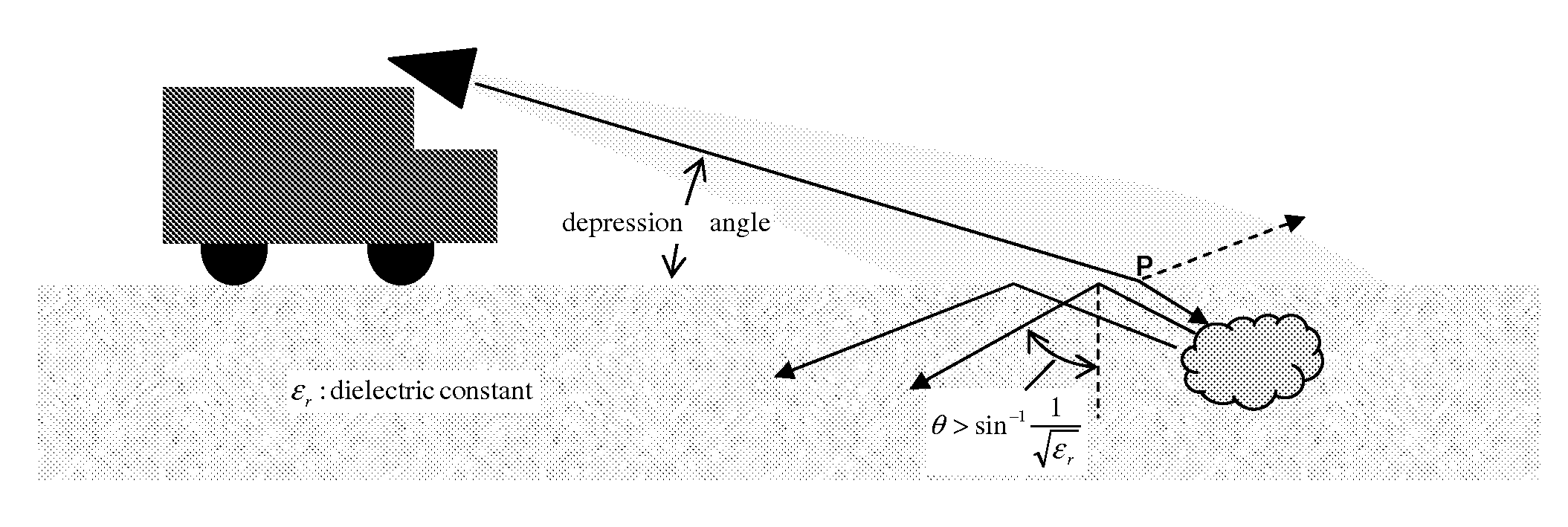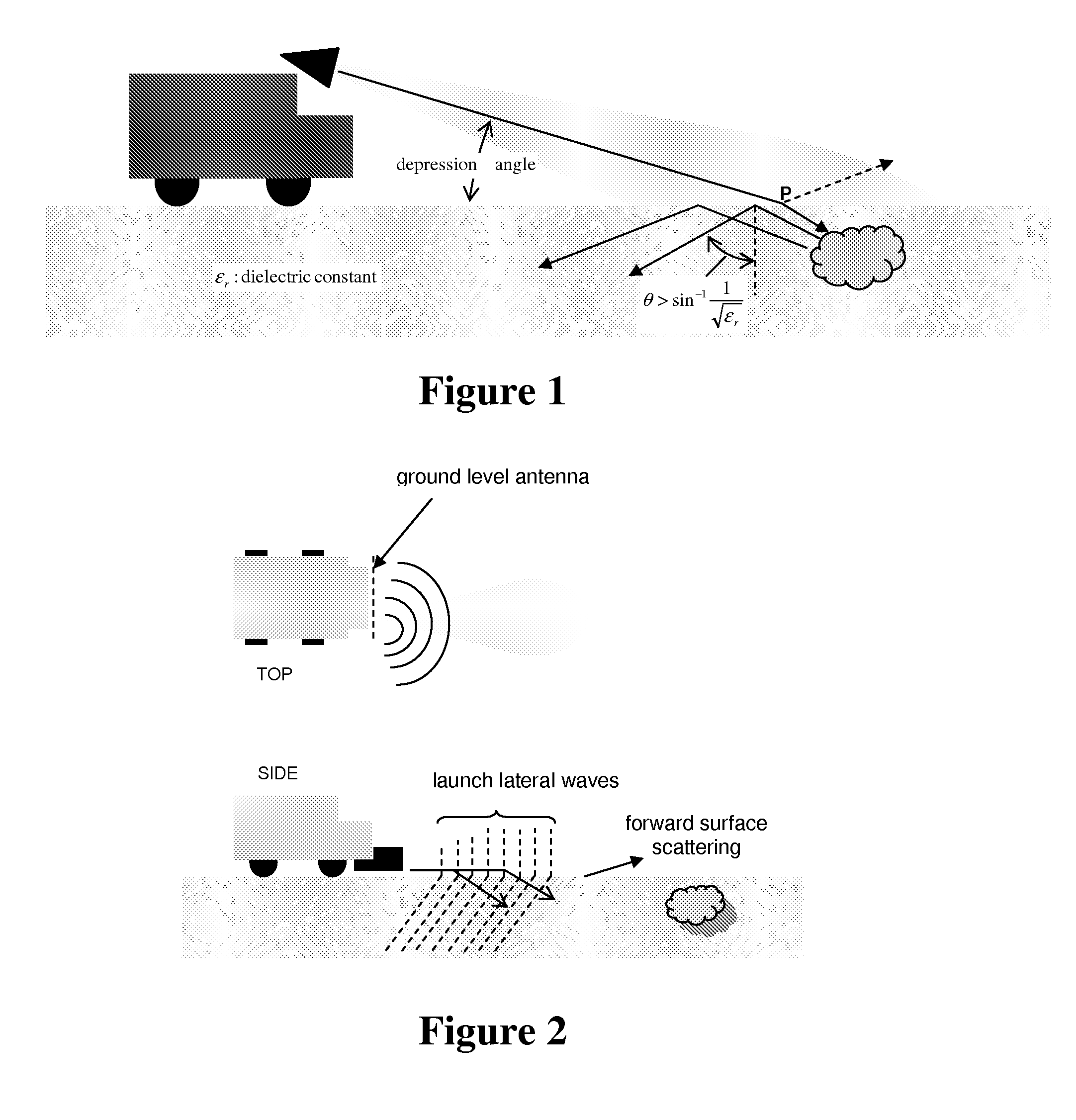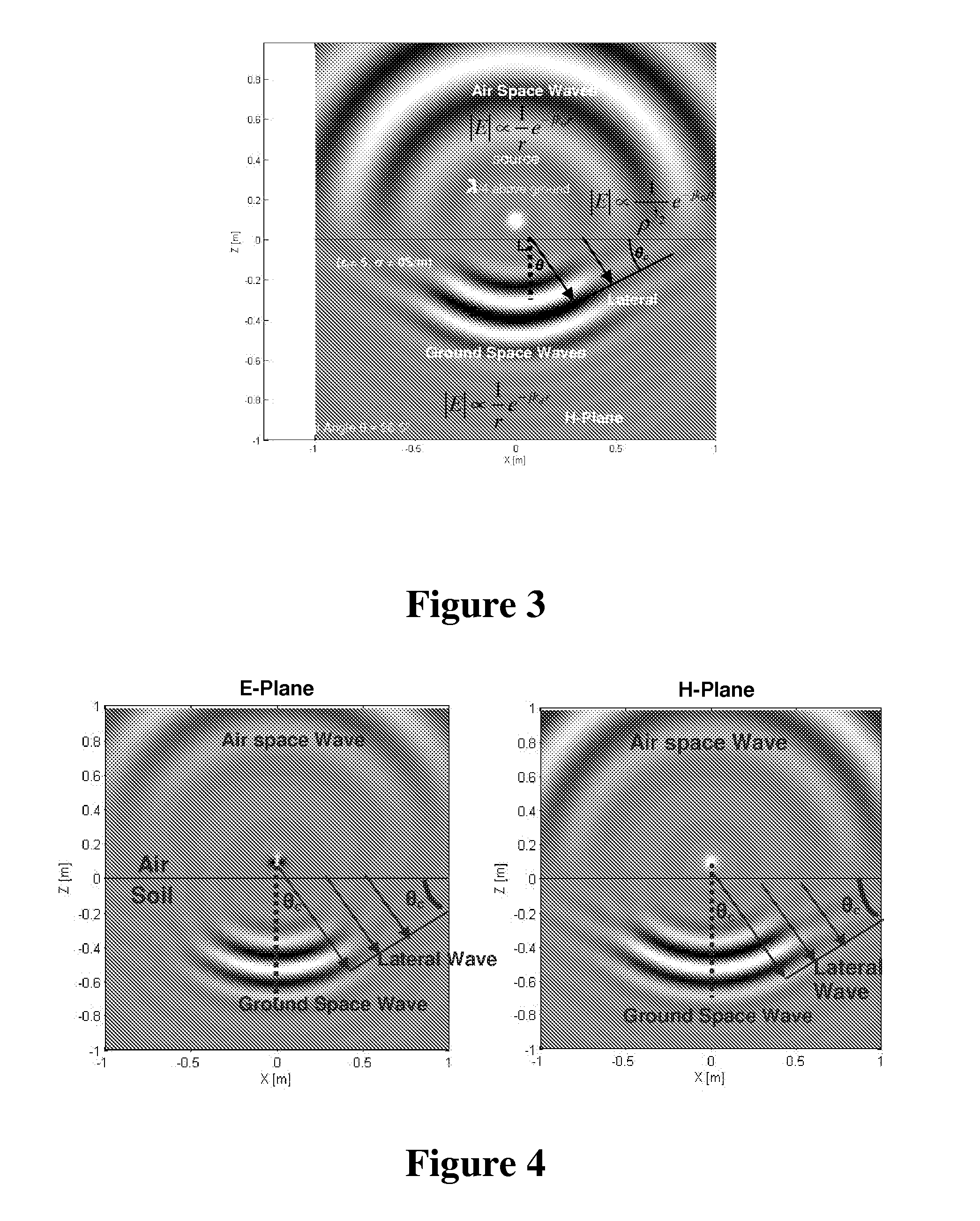Lateral wave radar system for forward detection
a radar system and lateral wave technology, applied in the field of radar detection, can solve the problems of not being able to reliably detect buried objects close to the front of a moving vehicle or to detect at a significant distance, being bulky, and showing very limited success according to the published results, and achieving the effect of limited success
- Summary
- Abstract
- Description
- Claims
- Application Information
AI Technical Summary
Benefits of technology
Problems solved by technology
Method used
Image
Examples
Embodiment Construction
[0096]The radiation power and radiation pattern from a small dipole located on or near ground surface were examined. FIG. 9 shows the calculated far-field radiation patterns at 100 MHz for a short dipole antenna positioned at different antenna heights above a ground characterized by εr=5 and σ=0 S / m. Below the ground, ground waves dominate radiation within a solid cone angle defined by the critical angle (θc=26.5°). Radiation beyond the critical angle is dominated by lateral waves. These results reveal that elevating an antenna's height causes reduction in lateral wave excitations and results in radiation mainly confined within the solid cone. This finding suggests that the antenna height should be kept less than 1 / 10 of wavelength in order to excite strong lateral waves.
[0097]It is a well know phenomenon in ground penetrating radar applications that more electromagnetic energy is coupled into ground when the antenna is close to ground. This phenomenon can be quantitatively describe...
PUM
 Login to View More
Login to View More Abstract
Description
Claims
Application Information
 Login to View More
Login to View More - R&D
- Intellectual Property
- Life Sciences
- Materials
- Tech Scout
- Unparalleled Data Quality
- Higher Quality Content
- 60% Fewer Hallucinations
Browse by: Latest US Patents, China's latest patents, Technical Efficacy Thesaurus, Application Domain, Technology Topic, Popular Technical Reports.
© 2025 PatSnap. All rights reserved.Legal|Privacy policy|Modern Slavery Act Transparency Statement|Sitemap|About US| Contact US: help@patsnap.com



